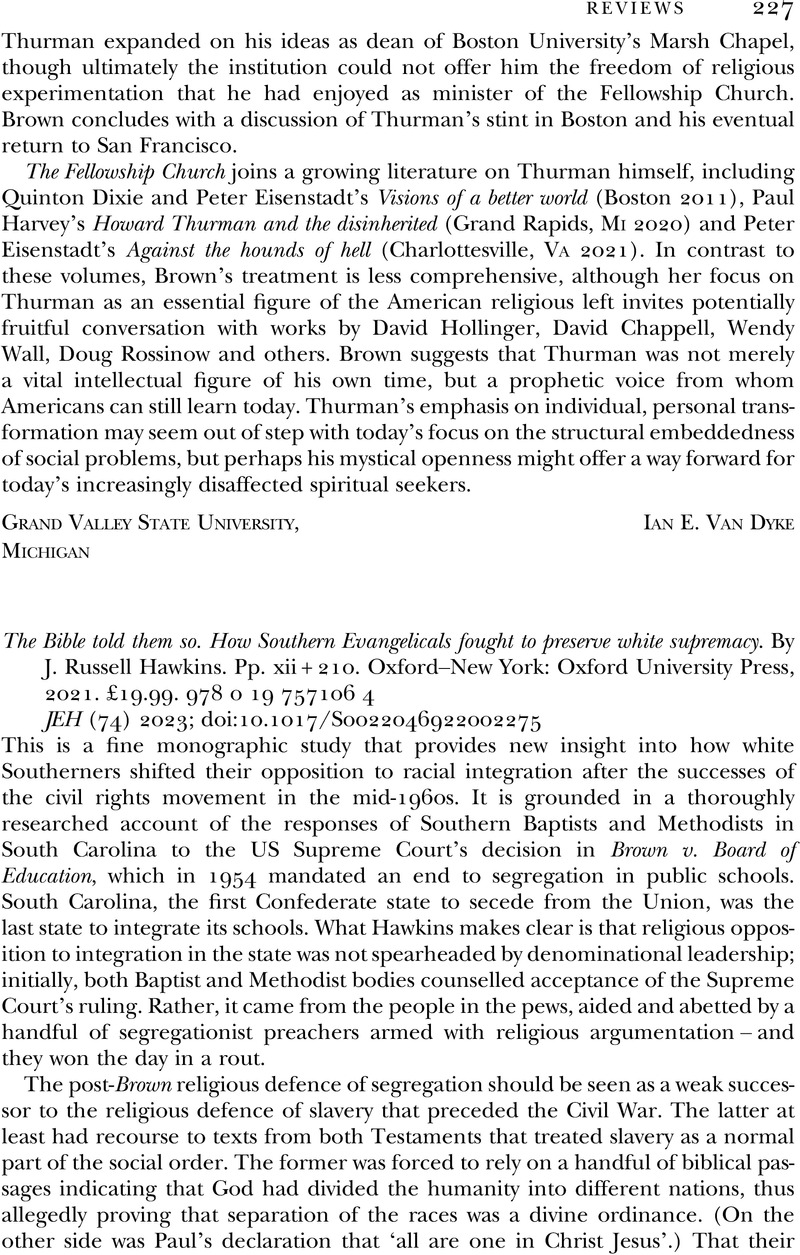No CrossRef data available.
Article contents
The Bible told them so. How Southern Evangelicals fought to preserve white supremacy. By J. Russell Hawkins. Pp. xii + 210. Oxford–New York: Oxford University Press, 2021. £19.99. 978 0 19 757106 4
Review products
The Bible told them so. How Southern Evangelicals fought to preserve white supremacy. By J. Russell Hawkins. Pp. xii + 210. Oxford–New York: Oxford University Press, 2021. £19.99. 978 0 19 757106 4
Published online by Cambridge University Press: 29 December 2022
Abstract
An abstract is not available for this content so a preview has been provided. Please use the Get access link above for information on how to access this content.

- Type
- Reviews
- Information
- Copyright
- Copyright © Cambridge University Press 2022



